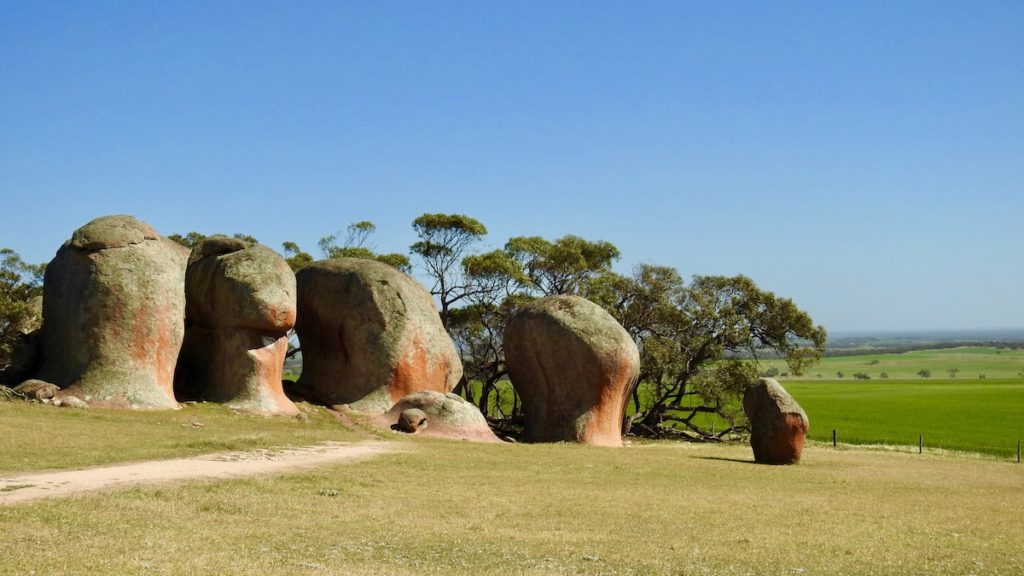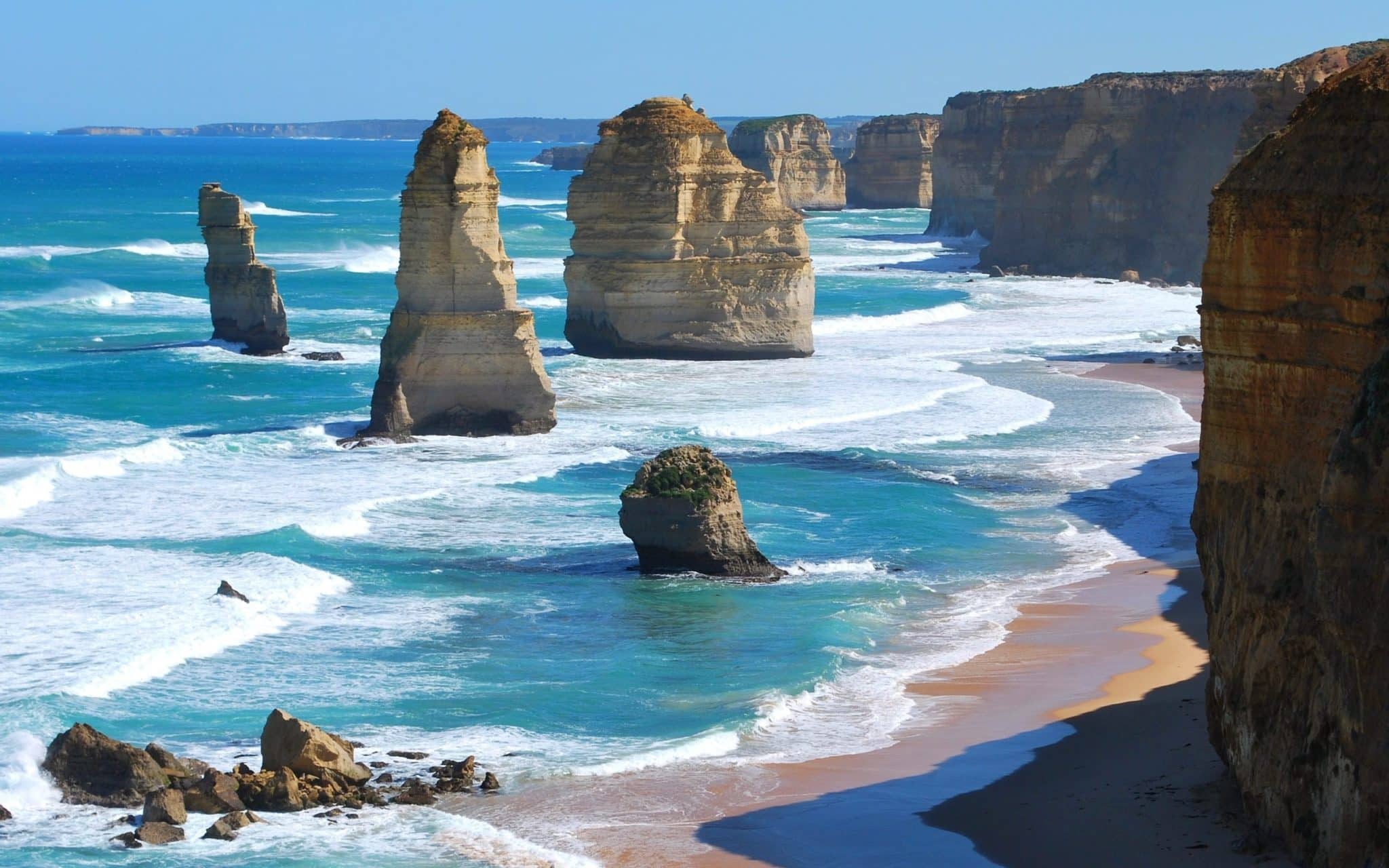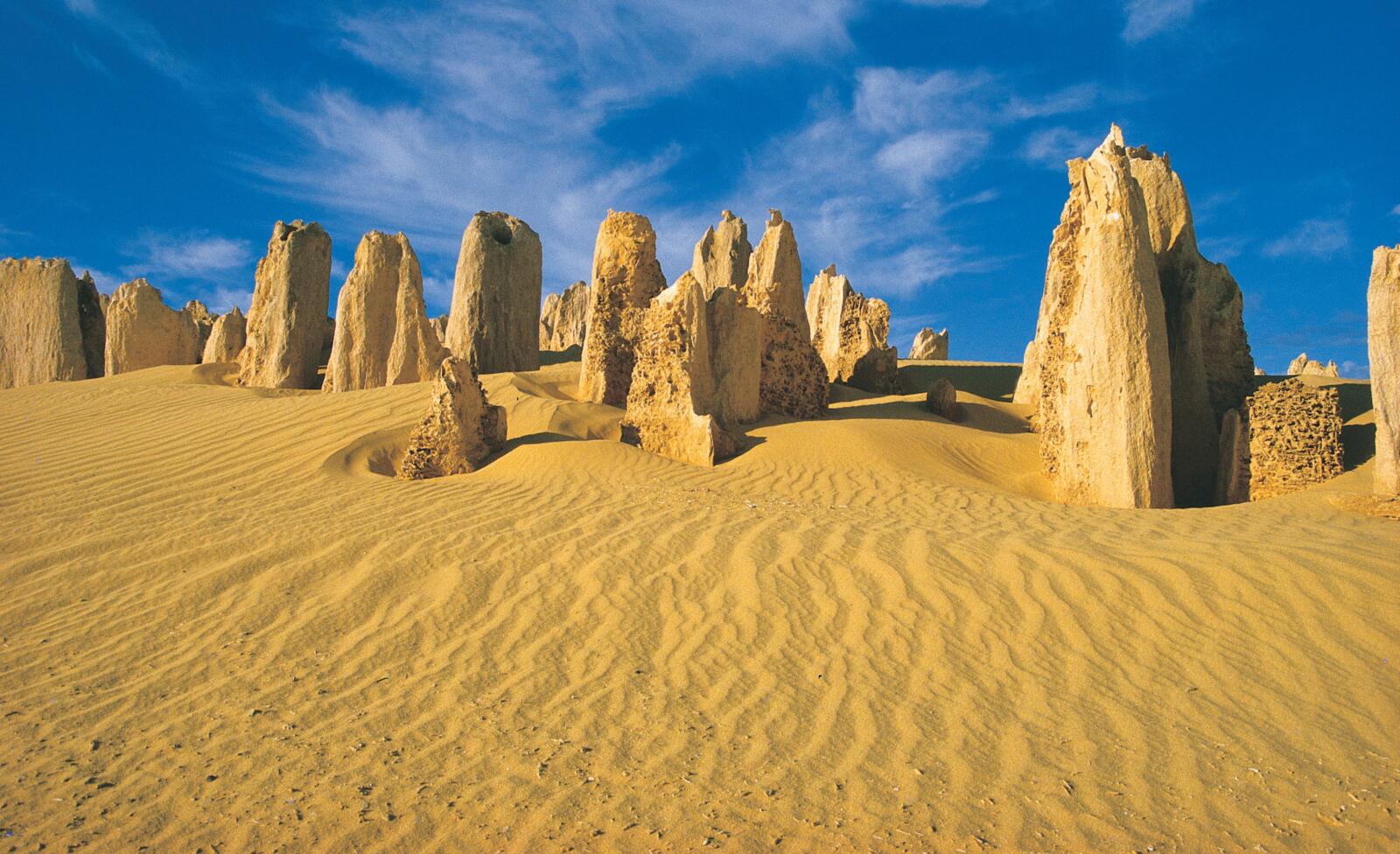
Australia is famous for its breathtaking landscapes and unique rock formations. These rocks provide a window into the Earth’s ancient history and hold deep cultural meaning.
Each rock has its own story, from Uluru, a massive red rock in the heart of the country, to the striking Twelve Apostles along the coast.
For instance, Uluru is sacred to the Anangu people and changes color with the sun. Similarly, the Twelve Apostles are tall limestone stacks shaped by the ocean.
Exploring these rocks reveals fascinating facts about Australia’s natural and cultural heritage. Surprisingly, they are not just rocks but symbols of the country’s history and beauty.
Here’s a journey through some of the most famous rocks in Australia and the fascinating facts about them.
Contents at a Glance
6 Famous Australian Rocks and their Fascinating Facts
1. Uluru (Ayers Rock)

Uluru, also known as Ayers Rock, is located in the heart of Australia’s Red Centre in the Northern Territory.
It is a massive sandstone monolith that rises 348 meters above the desert floor. This rock is sacred to the Anangu people, the traditional custodians of the land.
Fascinating Facts about Uluru Rock
- Uluru is estimated to be around 550 million years old. It began forming in the Cambrian period, making it older than some of the continents themselves.
- Uluru is famous for its stunning color changes at different times of the day and year. During sunrise and sunset, it glows red due to the sun’s low angle and the reflection of light.
- The surface of Uluru is marked with caves, grooves, and waterholes, many of which hold deep cultural significance for the Anangu people. These features are formed by erosion over millions of years.
- In October 2019, climbing Uluru was officially banned out of respect for its cultural and spiritual significance to the Anangu people.
2. The Twelve Apostles

The Twelve Apostles are a collection of limestone stacks off the shore of the Port Campbell National Park in Victoria. These majestic pillars were formed by the erosion of coastal cliffs over thousands of years.
Fascinating Facts the Twelve Apostles Rock
- Despite being called the Twelve Apostles, there are currently only eight remaining. The name was given to create a more appealing image, though there were originally only nine stacks.
- These stacks continue to be shaped by the harsh ocean. Some have collapsed over time, with one of the most notable collapses occurring in 2005.
- The tallest of the Twelve Apostles stands about 45 meters high. They are constantly being eroded by the wind and waves, which also creates new formations.
- The Twelve Apostles are one of Australia’s most visited natural landmarks, drawing millions of tourists each year.
3. Kata Tjuta (The Olgas)

Kata Tjuta, also known as The Olgas, is a group of large, domed rock formations located about 25 kilometers west of Uluru. Like Uluru, these formations hold great cultural significance for the Anangu people.
Fascinating Facts about Kata Tjutu
- The name Kata Tjuta means “many heads” in the local Pitjantjatjara language, referring to the 36 domes that make up the formation.
- Mount Olga, the tallest dome, stands at 546 meters above the surrounding plain, making it taller than Uluru.
- Kata Tjuta is made up of conglomerate rock, which is a mixture of pebbles, boulders, and sand cemented together. This contrasts with the sandstone composition of Uluru.
- Several areas within Kata Tjuta are sacred to the Anangu people, and access to these areas is restricted.
4. Wave Rock

Wave Rock is located near the town of Hyden in Western Australia. It is a natural rock formation that looks like a giant ocean wave frozen in stone.
Fascinating Facts about the Wave Rock
- Wave Rock stands about 15 meters high and stretches over 110 meters long. Its distinctive wave shape was formed by weathering and water erosion over millions of years.
- The rock itself is around 2.7 billion years old, making it one of the oldest known rocks in Australia.
- The stripes on Wave Rock are caused by the flow of water carrying chemicals down its surface, leaving behind streaks of color.
- Wave Rock is part of the sacred land of the Noongar people, who have lived in the region for thousands of years.
You may also like: The Most Thrilling Festivals to Attend In Adelaide, Australia
5. The Pinnacles

The Pinnacles are located within Nambung National Park in Western Australia. This natural wonder consists of thousands of limestone pillars rising from the yellow sands of the Pinnacles Desert.
Fascinating Facts about the Pinnacles
- The Pinnacles were formed approximately 25,000 to 30,000 years ago. They emerged from the sand as the sea receded and coastal winds eroded the surrounding material.
- The heights of the limestone pillars vary greatly, with some reaching up to 3.5 meters tall.
- The exact origins of the Pinnacles are still debated among geologists. Theories include the cementation of sand dunes or the dissolution of calcareous sand.
- The area around the Pinnacles is rich in biodiversity, with many species of plants and animals adapted to the arid conditions.
6. Devils Marbles (Karlu Karlu)

The Devils Marbles, or Karlu Karlu, are located in the Northern Territory. These giant, rounded boulders are scattered across a wide valley and balance precariously on top of each other.
Fascinating Facts about Devils Marbles
- The boulders vary in size, with some up to 6 meters in diameter. They have a striking red color and smooth surface, shaped by weathering over millions of years.
- Interestingly, Karlu Karlu is a sacred site for the local Aboriginal people. These people believe the boulders are the eggs of the Rainbow Serpent, a powerful creator being.
- The formation of the Devils Marbles starts from underground where granite is weathered into rounded shapes. As erosion continues to remove the overlying material, the boulders were exposed.
- Many of the boulders appear to defy gravity, balancing on small points. This is due to the way erosion has sculpted the granite over time.
Frequently Asked Questions
Are these famous rocks accessible to Visitors?
Yes, most of these famous rocks are accessible to visitors. However, it is important to respect their cultural and environmental significance.
What is the most famous rock in Australia?
Although, all the rocks here are famous, but the most famous rock in Australia is the Uluru.
What should I do when visiting these rocks?
Importantly, when visiting these rocks, ensure to follow local guidelines, stay on marked paths, and also respect any cultural restrictions.
Conclusion – Interesting Facts About Some Famous Australian Rocks
Australia’s famous rocks are not only geological marvels but also cultural and natural treasures. Each rock tells a story of millions of years of geological processes and cultural connections.
Amazingly, these landmarks not only attract millions of visitors each year. They also serve as important symbols of Australia’s rich natural heritage and Aboriginal culture.
Australia’s famous rocks offer a journey through time and beauty, leaving a lasting impression on all who visit them.








Wow! This could be one particular of the most helpful blogs We’ve ever arrive across on this subject. Basically Fantastic. I’m also an expert in this topic so I can understand your effort.
Nice to know.
Thank you for all your feedback.
Best